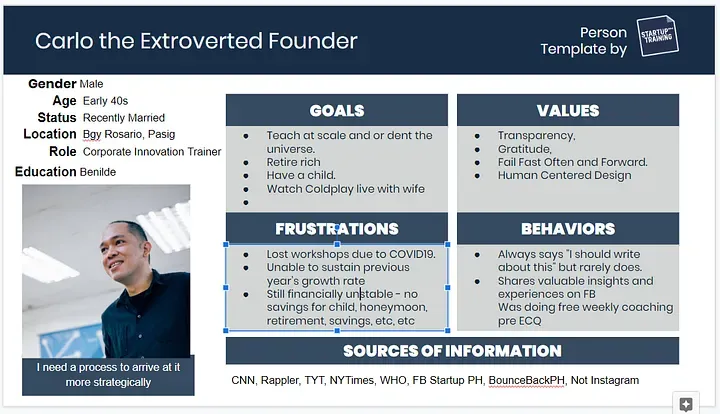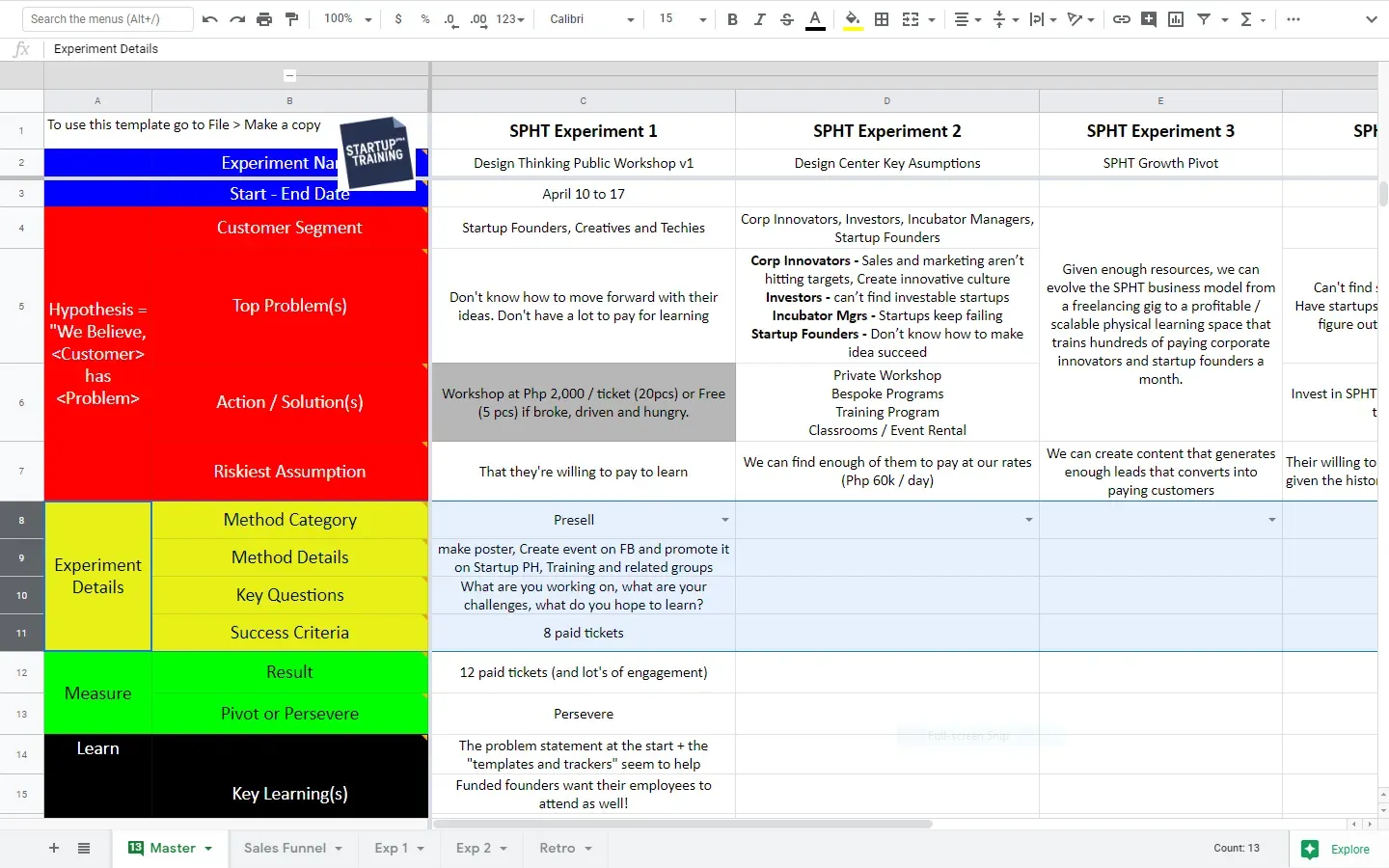The First 5 Steps to Building Your Startup or Digital Product
If you’ve ever thought of an app, platform or product idea and the first thing you have in mind is how do I build it, then this article and and the series of articles after this is for you.
If you want to save yourself from hundreds of thousands of pesos, agony over not knowing what to do next, and months or maybe even years of your time, this article is also for you.
Yes you can do a google search — and you probably should — about what has already been done by others. But that’s not enough. It’s far from enough.

This is what happens when you build an app based on what your competitors are doing and not what your customers need
One of the biggest mistakes I see big corporations do when creating a new tech product is focusing on what their competitors have done. They do this and try to figure out how to do it better. Then they create a set of requirements and specifications for developers based on that information. This is an expensive wrong move. Startup founders do the same. Don’t make the same mistake.
What matters isn’t what your competitors have done. What matters is what your customers need. What matters is knowing who you want to help and what problems they have that you could help them with. This is important if you are a small startup or one of the largest retail stores in the country.
The following are the steps I recommend each founder or corporate innovator should take when creating new products, services or processes. The fundamentals will be the same though how to execute it will vary depending on your context, skill set and resources you have available. I’ll dive into each step in future articles and as I do so, will provide relevant links.
Step 0: Are you in it for the right reasons?
Before you even take the first step in becoming an entrepreneur or innovator, you need to first figure out if you really want to be one or if you’re only in love with the idea of being one. Being a founder or a corporate innovator seems exciting because you always see them on stage when they’re winning.
You don’t see all the failures and times that they lost. You don’t see all the self doubt, the criticism all the other challenges put in front of them. It takes a lot of grit, hard work and years of failure to be what people call “an overnight success.” You don’t see all the boring stuff that needs to be done which got them to where they are.
“It took me 17 years to be an overnight success” — Lionel Messi
Are you willing to get out of your comfy chair and interview people? Are you willing to pitch to them and fail? Are you willing to learn tons of new things, go through gigabytes of documents and spreadsheets, create presentation after presentation and attend meeting after meeting after meeting with customers, stakeholders, recruits, co founders and investors? Are you willing to persevere when nobody else believes in you? No? Then quit now. There’s no shame in that. Entrepreneurship and innovation is very hard and not for everyone.
“Entrepreneurs are crazy” and that’s a good thing — Matt Vella
Step 1: Define who your customer is.
This is not negotiable. Defining your customer in passing just so you can go to the next step. Not having your solution is not a problem your customers solve. If you don’t know who your customers will be, you’re already dead before you start. And no, the general public does not qualify as a customer
Hoping to get 1% of a 10 or 100 million population is also a non starter. When you tell potential investors this, what they’re hearing is: “I have no idea who my customer is”.
This is called the top-down approach. Take the bottom-up approach instead. Find 100 people that have a problem so big that they’ll pay you a lot of money to solve it. If you can solve it for them, there’ll be more people like them. Facebook didn’t target 2 billion people on day 1. They focused only on Harvard students then grew from there. Be like The Facebook when they started.
Asking hypothetical questions like “what if I tell you about this app…” is not getting to know them. Remember, your job isn’t to get feedback on your idea. Your job is to get to know them. Here are the things you need to find out about them.
- What kind of people have this problem?
- What do they wish for? What matters to them?
- What do they want to achieve in life?
- What is a day in their life?
- How do they behave in their day to day?
- Where do they go when they’re on their phone?
- Do they even have a phone? What kind? Do they have data or rely on wifi?
- Where do they read the news?
- What are their demographics?
Talk to your potential customers, get to know them. Understand their goals, frustrations, behaviors, the values and where they get their information. Know them enough to create a persona of them.

Here’s a persona of the author. You need to know your customers enough to build a persona of them.
Step 2: Found a problem? Dive into it
Diving into problems means diving into the people that have them. To get to know them, you need to ask open ended questions about their experiences within the problem and not their opinions.
Get Carlo P Valencia’s stories in your inbox
You know them a bit better now. Great! Now get to know about their problems. No, not having your product isn’t your customer’s problem. Not yet anyway. Here are some of the things you need to find out about their problems.
- How often does the problem happen to them?
- How does it affect them?
- How does it affect the people around them?
- How much does it cost them to solve their problems?
- What are they doing to solve it now? Are they happy with the solution?
- If they had a magic wand, what would they wish for?

Are you unsure if what you’ve found is a “problem worth solving”? That means you haven’t found it. If you did, it would be obvious to you. At some point in time, you will meet people and without having to interview them, you will know if they have the problem you want to solve for them. You will see people’s pain and frustrations and you will want to help because it’s the right thing to do. If not, keep looking.
You will most likely get this wrong at the start. That’s okay. Go fail and do it again. Once you know who they are and think you know their problems, you can move to the next step.
Step 3: Presell a solution to the problem
The one crucial thing that moves you from startup idea to actual startup is a paying customer. You don’t need to build your product to be a startup. You need at least one paying customer.

Real estate developers presell their products all the time. Startups and other businesses should do the same with their products
Real estate developers and most large companies do this all the time and is a major reason for their success.
They have the land, they have plans but they don’t build it. What do they do? They presell their product. If nobody buys on the presell, they don’t build it. They adjust. They make changes based on the feedback they get from people that could have bought but didn’t.
Your idea/product should be no different.
If potential customers are seeing your offer and nobody is responding, building it won’t matter. You need to adjust quickly. Change your target customer, your value proposition, pricing, or something. Then try again. You need to be systematic here.

The Experiment Tracker (based on the Javelin Board) is an excellent tool to get you trying multiple times in a short amount of time.
Step 4: Got buyers? Now serve them manually
You cannot automate something you have not done. You also cannot outsource this or delegate this to your employees. You need to get your hands dirty and do it yourself. You can also do it with your team but you need to be very involved. Like the previous stages, things will fail and it is up to you to make things right if there were errors/mistakes. If you aren’t there when the point failure happens, you will not be able to correct it.
There will also be things that will go right and if you’ve been able to solve real problems, you will see very happy customers and get very positive feedback. You need to see that too. None of this will be available in the boardroom or in reports. You need to see this with your own eyes and experience it firsthand.
Step 5: Start designing your product, not building it
There are others that would say you can do this as step 1. You can — if you are willing to risk about a month of your time. Or do so if you are already familiar with the problem you want to solve and the people you want to help. If not, then follow the steps above.

Start with low fidelity prototypes, then moving to high fidelity based on the feedback you’re getting
Design Sprints are highly recommended but not required. It would be a good idea to bring in your developers at this point. But before you hand off to your developers, you want to get to a point that you have the product’s design specifications at a level of detail that will leave little to the developer’s imagination.
Developers are very often not designers. Nothing against developers — it’s just a different skill set needed.
Do You Need Help?
If you’ve reached this far and you think that I can help you in your startup or innovation journey, let me know and I’m more than happy to help. We’re launching an 8 week coaching program that will take you from idea to an initial set of customers using the steps indicated in this article.
Interested? Email me at [email protected] for more details!

